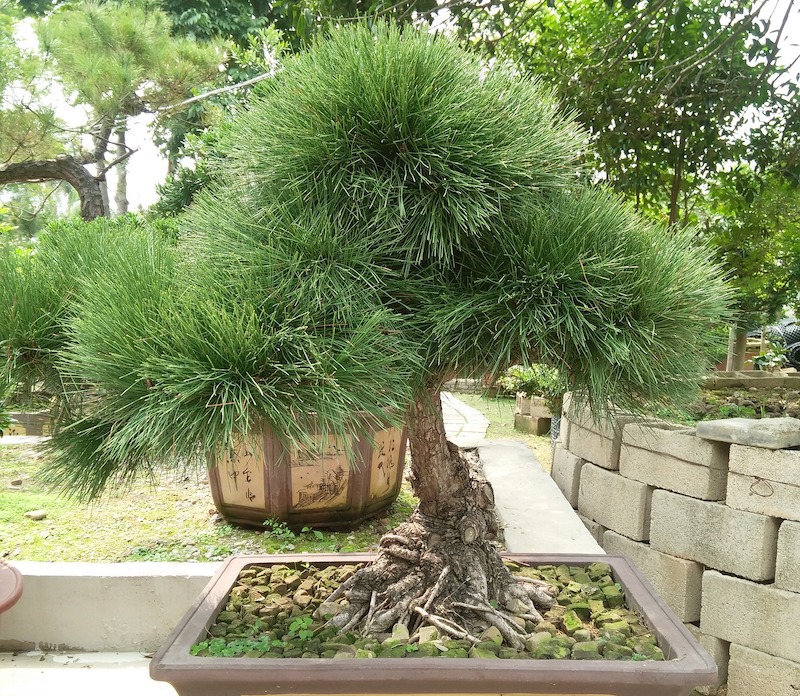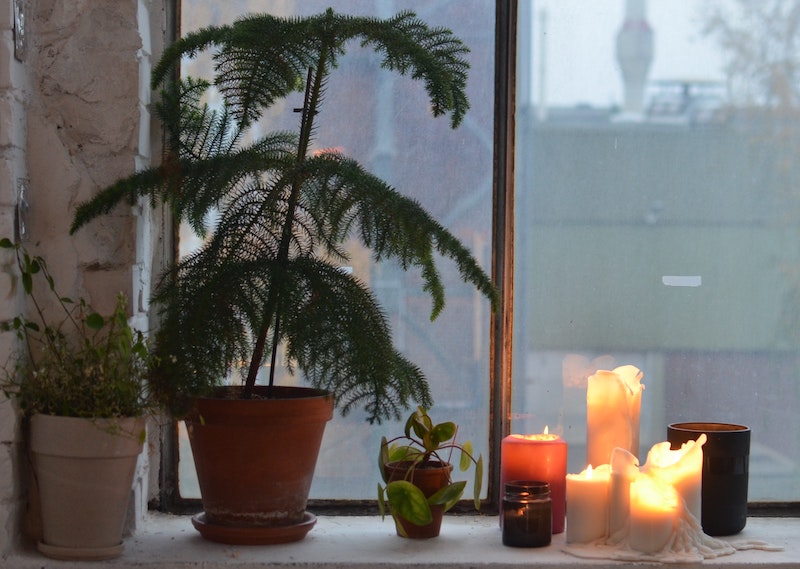Pine trees, Pinus sp., are popular evergreen plants that are often seen growing in gardens and natural areas, but did you know that it is also possible to grow them in containers? Growing pine trees in containers is an excellent choice for areas that are tight on space. Potted pine trees look wonderful when placed on sunny balconies and patios, and the dwarf and shrub-like cultivars work well in container plantings or groupings. Read on to learn how to grow and care for pine trees in pots.

Planting Pine Trees in Pots
When it comes to growing pine trees in containers, the best time to plant is whenever the plants are partially dormant. Early fall, late winter, and spring are all good times to plant. To reduce risk of transplant shock and ease the establishment of roots, plant pine trees in the early morning or during an overcast day. Place the potted pine tree in a location that receives full sun. Select a pot that is roughly twice the width of the plant’s root ball. Additionally, the container needs to have drainage holes. When planting pine trees in containers, the root collar – where the trunk meets the roots – should be even with the soil line. The pot should be made of heavy material, such as clay or ceramic, to prevent the trees from falling over.
Best Soil For Pine Trees in Pots
Pine trees require well-drained soil with a slightly acidic to neutral pH. A peat-based potting mix with perlite, sand, or pumice will suffice. Bonsai potting mixes will often provide these same qualities, at a ratio of about 2 parts peat to 1 part perlite and/or pumice. Avoid adding rocks to the bottom of the pot for drainage. This will raise the water table, creating anaerobic soil conditions for the lowermost roots while encouraging rot. A 2-inch layer of wood-based mulch can be added to the top of the soil, spread away from the trunk, for extra moisture retention and soil insulation.
Caring For Pine Trees in Planters
Pine trees growing in containers have different care needs than pine trees growing in the ground, especially regarding water, fertilization, and winterization. Keep in mind that pine trees grown in containers will usually not reach their full size potential, as the limited root area affects aboveground growth.
Watering Pine Trees in Pots
Pine trees grown in containers will need to be watered more often than pine trees grown in the ground since soil in containers tends to dry out sooner than ground soil. Water your pine tree whenever the soil feels dry to the touch. Water the plant until the soil is consistently moist, but not saturated. Empty any water from the drainage tray. Allow your potted pine tree to dry out in between waterings. Pine trees in pots should be watered immediately after planting or fertilizing, before winter, and during periods of extreme heat and drought. Newly transplanted pine trees will need to be watered more frequently than more established pine trees in containers.
Fertilizing Pine Trees in Pots
Pine trees grown in pots will need to be fertilized for healthy growth. Unlike pine trees growing in the ground, container-grown pine trees have a restricted root zone, and will need to be supplied with nutrients when none are available. Fertilize your pine trees in early spring as new growth, called candles, emerges. Fertilizing too late in the season may lead to quick bursts of growth that are more prone to winter damage. There are several fertilizers available that are formulated for evergreens. A slow-release, granular formula works best to prevent leaching and burning. Slow-release fertilizer can be incorporated into the potting soil when planting the pine tree in spring. Be sure to water your pine trees after applying fertilizer.
Winter Care For Pine Trees In Pots
With proper care and planning, container-grown pine trees will survive winter. The soil of plants grown in pots will be colder than the soil of plants grown in the ground. Opt for pine species or varieties that are hardy to zones colder than your own growing zone. For example, if you live in zone 8 and want to grow pine trees in containers, the pine trees you select should be hardy to at least zone 7 or below.
Like pine trees growing in the ground, container-grown pine trees are also susceptible to winter burn if kept outdoors. Winter burn occurs as the pine needles transpire throughout winter, losing water faster than the roots can take it up. Water your pine trees deeply in late fall before the soil freezes, and water as needed on any winter day when temperatures are above 40 degrees F. For extra winter protection, move your container-grown pine tree to an unheated garage or shed with supplemental lighting. Alternatively, place your potted pine tree on a sheltered porch away from harsh winds and sunlight, which can exacerbate the effects of winter burn.

Growing Pine Trees Indoors
Most species of pine trees are native to temperate regions and rely on seasonal cues such as light and temperature to grow and develop. That being said, pine trees do not make good indoor plants since they require exposure to outdoor elements to survive. In addition, indoor locations often do not provide the full sun environment that pine trees need. If you desire to grow pine trees indoors year-round, Norfolk Island pines, Araucaria heterophylla, are a good option. While not true pines, Norfolk Island pines are excellent houseplants that somewhat resemble pine trees in appearance, proving to be a suitable indoor replacement for Pinus sp.
 |
Lauren Youngcourt - Published 04-07-2023 |
